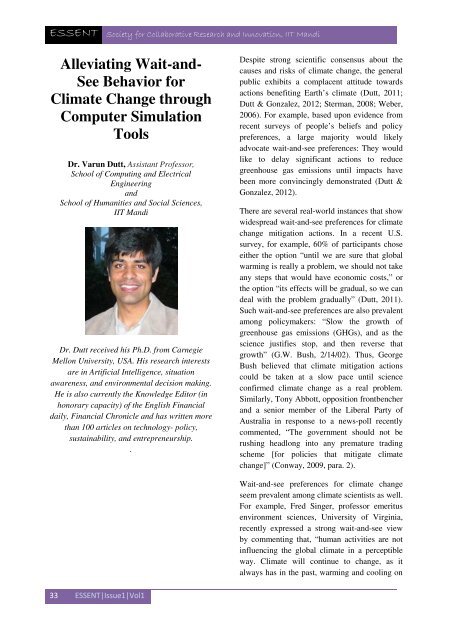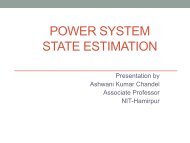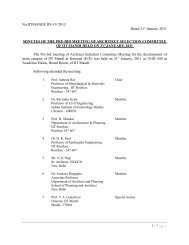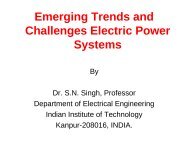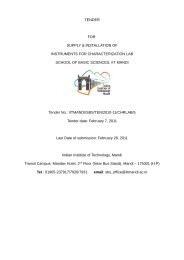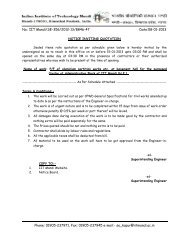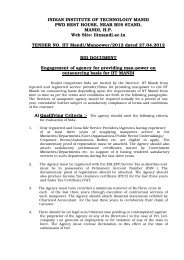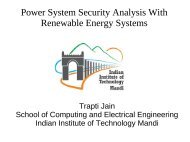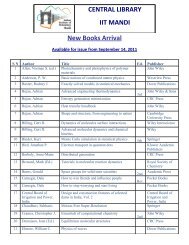Issue1. Vol.1 (April, 2013) - IIT Mandi
Issue1. Vol.1 (April, 2013) - IIT Mandi
Issue1. Vol.1 (April, 2013) - IIT Mandi
- No tags were found...
Create successful ePaper yourself
Turn your PDF publications into a flip-book with our unique Google optimized e-Paper software.
ESSENT Society for Collaborative Research and Innovation, <strong>IIT</strong> <strong>Mandi</strong>Alleviating Wait-and-See Behavior forClimate Change throughComputer SimulationToolsDr. Varun Dutt, Assistant Professor,School of Computing and ElectricalEngineeringandSchool of Humanities and Social Sciences,<strong>IIT</strong> <strong>Mandi</strong>Dr. Dutt received his Ph.D. from CarnegieMellon University, USA. His research interestsare in Artificial Intelligence, situationawareness, and environmental decision making.He is also currently the Knowledge Editor (inhonorary capacity) of the English Financialdaily, Financial Chronicle and has written morethan 100 articles on technology- policy,sustainability, and entrepreneurship..Despite strong scientific consensus about thecauses and risks of climate change, the generalpublic exhibits a complacent attitude towardsactions benefiting Earth’s climate (Dutt, 2011;Dutt & Gonzalez, 2012; Sterman, 2008; Weber,2006). For example, based upon evidence fromrecent surveys of people’s beliefs and policypreferences, a large majority would likelyadvocate wait-and-see preferences: They wouldlike to delay significant actions to reducegreenhouse gas emissions until impacts havebeen more convincingly demonstrated (Dutt &Gonzalez, 2012).There are several real-world instances that showwidespread wait-and-see preferences for climatechange mitigation actions. In a recent U.S.survey, for example, 60% of participants choseeither the option “until we are sure that globalwarming is really a problem, we should not takeany steps that would have economic costs,” orthe option “its effects will be gradual, so we candeal with the problem gradually” (Dutt, 2011).Such wait-and-see preferences are also prevalentamong policymakers: “Slow the growth ofgreenhouse gas emissions (GHGs), and as thescience justifies stop, and then reverse thatgrowth” (G.W. Bush, 2/14/02). Thus, GeorgeBush believed that climate mitigation actionscould be taken at a slow pace until scienceconfirmed climate change as a real problem.Similarly, Tony Abbott, opposition frontbencherand a senior member of the Liberal Party ofAustralia in response to a news-poll recentlycommented, “The government should not berushing headlong into any premature tradingscheme [for policies that mitigate climatechange]” (Conway, 2009, para. 2).Wait-and-see preferences for climate changeseem prevalent among climate scientists as well.For example, Fred Singer, professor emeritusenvironment sciences, University of Virginia,recently expressed a strong wait-and-see viewby commenting that, “human activities are notinfluencing the global climate in a perceptibleway. Climate will continue to change, as italways has in the past, warming and cooling on33 ESSENT|Issue1|Vol1


